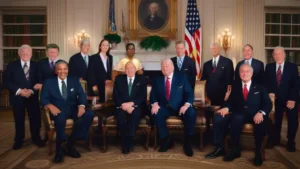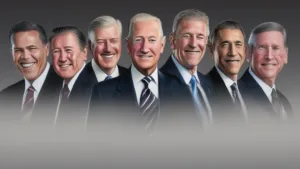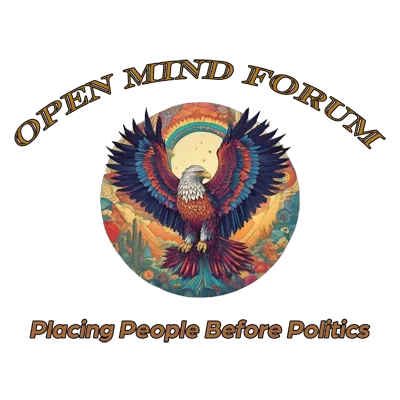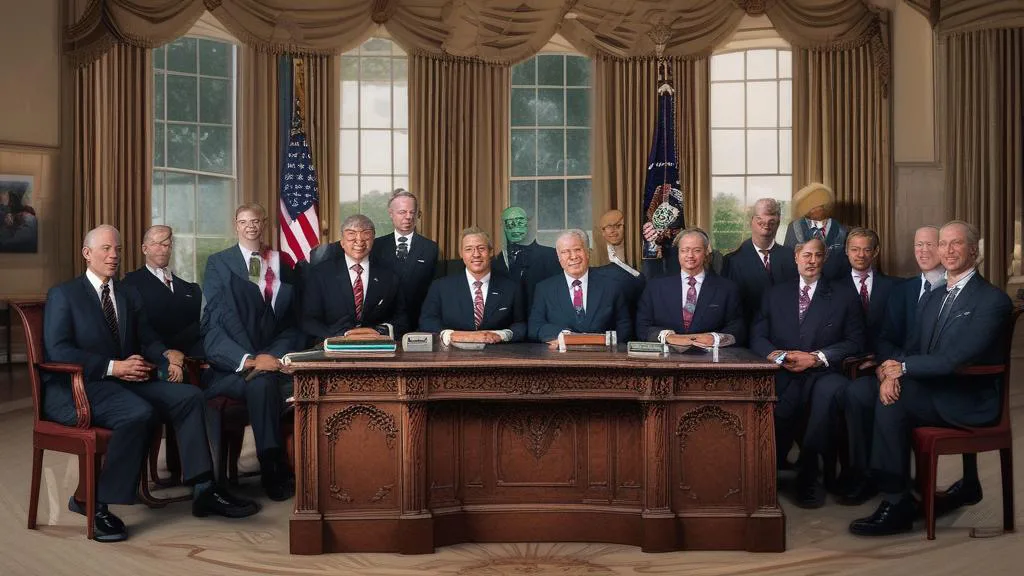The Great Economic Divide in America and the World

Is there any difference between Democrats and Republicans any more? As an independent observer, I suggest there is not. At least not at the core. As both sides utilize a discourse that sounds quite different, they are, in fact, dedicated to the core of Randian self-centered fears. What is different is the differences in their talking points, yet when analyzed, their talking points are at the root of the same discontent. The Republicans are poised to speak about the political correctness, thus, folly of the democrats while the Democrats are speaking about the Republicans as authoritarian monsters bent on destroying the constitutional guarantees of human rights. Both are blaming the victim rather than acting in the best interests of the people they govern as a smoke screen to hide their own complicity in the general scheme of greed and self-interest that is the politics of America today.
The “Reagan Revolution” marked the beginning of a shift that abandoned a pragmatic, compromise-driven approach to governance in favor of a unified, market-centric political ideology. With both parties adopting policies favoring corporate interests over social welfare, we must ask: Is there any difference between Democrats and Republicans anymore?
The Reagan Era and the End of Pragmatism: Is There Any Difference Between Democrats and Republicans
President Reagan’s tenure laid the groundwork for a neoliberal transformation across the political spectrum. His administration’s swift and firm anti-union stance was apparent in the 1981 air traffic controllers’ strike. Reagan’s decision to break the Professional Air Traffic Controllers Organization (PATCO) by firing over 11,000 striking workers showcased a growing disdain for labor rights. This action signaled a broader cultural shift that ultimately harmed the middle class by undercutting the bargaining power of unions and encouraging policies favoring employers over workers (McCartin, 2011).
Reagan also targeted media regulation, leading to the repeal of the Fairness Doctrine in 1987. Without the requirement for balanced political views, partisan media surged, enabling networks to promote single-sided narratives. This deregulation allowed media outlets to align with corporate or political agendas, reinforcing ideological divisions rather than promoting informed debate (Pickard, 2018).
Media Consolidation Under Clinton: The Telecommunications Act of 1996–Is There Any Difference Between Democrats and Republicans
President Bill Clinton’s administration also embraced Neo-liberalism, marking a departure from the party’s historical emphasis on labor rights and social equity. The Telecommunications Act of 1996, which Clinton signed into law, deregulated media ownership and allowed corporations to own

multiple outlets across various media markets. Although intended to promote competition, it led to unprecedented media consolidation, with just a few corporations controlling the majority of media in the United States. The reduction in media diversity and the growing corporate influence in the press created a news environment shaped by profit motives rather than public interest, further polarizing the electorate (McChesney, 1999; Baker, 2007).
The Repeal of Glass-Steagall: A Crisis for the Middle Class
Another significant neoliberal policy shift occurred in 1999 with the repeal of the Glass-Steagall Act under Clinton, which had kept commercial and investment banking separate since the Great Depression. The repeal allowed banks to engage in risky financial ventures, ultimately contributing to the 2008 financial crisis. This bipartisan support for deregulation, celebrated by corporate America, left ordinary Americans vulnerable to economic collapse. With the rise of “too big to fail” banks, both Democrats and Republicans prioritized corporate profits over financial stability, exacerbating wealth inequality and financial insecurity for middle-class Americans (Johnson & Kwak, 2011).
Globalization and Free Trade: A Unified Front–Is There Any Difference Between Democrats and Republicans
Both parties have actively supported neoliberal trade policies, often to the detriment of American workers. The North American Free Trade Agreement (NAFTA), signed by Clinton, and the Trans-Pacific Partnership (TPP), supported by President Obama, both aimed to expand markets and reduce tariffs. However, these trade agreements incentivized outsourcing, resulting in job losses and stagnant wages for American workers while benefiting corporations. The bipartisan endorsement of free trade cemented the parties’ allegiance to a corporate-friendly agenda, reinforcing their neoliberal alignment (Stiglitz, 2016).
The Rise of Corporate Power in Politics
The culmination of neoliberal influence over American politics is evident in the 2010 Citizens United v. FEC ruling, which removed restrictions on corporate political spending. This landmark decision, supported by both parties, legally sanctioned corporate influence over the democratic process, allowing “dark money” to flood elections. Consequently, corporations gained unprecedented power to shape policies and control political narratives, prioritizing profit over public good (Mayer, 2016).
This bipartisan support of corporate interests signifies a shift from the traditional ideological distinctions. Both parties now operate within a neoliberal framework that values corporate power over public accountability, limiting voters’ ability to effect change. The result is a political landscape where financial elites benefit from policies that contribute to inequality, while the middle class faces growing economic and social challenges.
Let’s take a Summative Look at the Politics of Neo-Liberalism
National Policies: Free Trade and the Decline of Labor
Both parties’ support for free trade agreements further evidences their ideological alignment. President Clinton signed the North American Free Trade Agreement (NAFTA) in 1993, resulting in substantial manufacturing job losses to Mexico. Later, President Obama backed the Trans-Pacific Partnership (TPP), aimed at enhancing trade by reducing tariffs. Although these agreements purported to protect labor, they transferred jobs overseas, affecting American workers while benefiting multinational corporations. Republicans and Democrats alike supported these policies, reinforcing their shared commitment to globalization over national labor interests .
Culture and the Weakening of Identity
Social and cultural policies also reflect a unified, Neo-liberal approach. Both parties enforce a language of inclusion that, while well-intentioned, sometimes disregards cultural nuances. The rise of the term “Latinx” as a gender-neutral alternative for Latino/Latina individuals is one example. Though designed to promote inclusivity, this change disregards the linguistic structure of Spanish, alienating native speakers. Democrats promote this cultural shift, while Republicans avoid direct opposition, illustrating a shared pattern of bending identity for ideological goals.
Global Policing and Free Trade: An Unofficial Consensus
On foreign policy, both Democrats and Republicans champion America’s role as a global enforcer of free trade. This approach, grounded in Neo-liberalism, disregards national labor benefits in favor of expanding American corporate influence abroad. The shared commitment to maintaining open markets has eroded distinctions between the two parties, leaving the question, “Is there any difference between Democrats and Republicans anymore?” unanswered. Ultimately, corporate interests overshadow any remaining ideological differences.
References
– Baker, D. (2007). The United States Since 1980. Cambridge University Press.
– Johnson, S., & Kwak, J. (2011). 13 Bankers: The Wall Street Takeover and the Next Financial Meltdown. Pantheon.
– Mayer, J. (2016). Dark Money: The Hidden History of the Billionaires Behind the Rise of the Radical Right. Doubleday.
– McCartin, J. A. (2011). Collision Course: Ronald Reagan, the Air Traffic Controllers, and the Strike that Changed America. Oxford University Press.
– McChesney, R. W. (1999). Rich Media, Poor Democracy: Communication Politics in Dubious Times. University of Illinois Press.
– Pickard, V. (2018). Democracy Without Journalism? Confronting the Misinformation Society. Oxford University Press.
– Stiglitz, J. E. (2016). The Price of Inequality: How Today’s Divided Society Endangers Our Future. W.W. Norton & Company.
Suggestions for Further Reading
– McCartin, J. A. (2011). Collision Course: Ronald Reagan, the Air Traffic Controllers, and the Strike that Changed America. Examines Reagan’s handling of the PATCO strike and its implications for labor rights.
– Pickard, V. (2018). Democracy Without Journalism? Confronting the Misinformation Society. A critical view on the impacts of the Fairness Doctrine’s repeal and media consolidation.
– McChesney, R. W. (1999). Rich Media, Poor Democracy: Communication Politics in Dubious Times. Discusses media consolidation and corporate influence on journalism.
– Johnson, S., & Kwak, J. (2011). 13 Bankers: The Wall Street Takeover and the Next Financial Meltdown. Details the impact of deregulation and financial consolidation on the American economy.
– Baker, D. (2007). The United States Since 1980. Offers insights into neoliberal policy shifts and economic impacts on the middle class.
– Stiglitz, J. E. (2016). The Price of Inequality: How Today’s Divided Society Endangers Our Future. Explores how globalization and free trade impact inequality.
– Mayer, J. (2016). Dark Money: The Hidden History of the Billionaires Behind the Rise of the Radical Right. Investigates corporate political influence post-Citizens United.
Disclaimer: The images and videos in this post are AI-generated creations, intended purely for illustrative and conceptual purposes. They are not real-life representations and should not be interpreted as such. Their sole purpose is to offer a visual means of exploring the topics discussed in this post.




